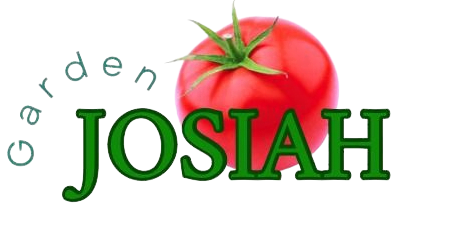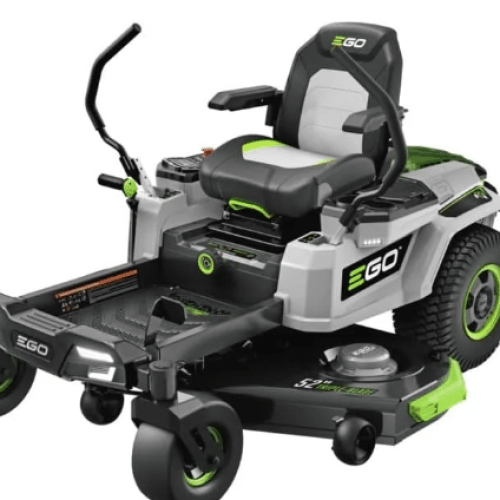Sup guys JV Charles again. Microgreens are changing the way we eat by adding more nutrients to our meals. These small, colorful plants are full of vitamins, minerals, and antioxidants. They’re great for anyone, whether you’re an experienced gardener or just starting with urban farming. Learning how to harvest microgreens can open up new cooking possibilities. So much fun!
This guide will show you how to harvest microgreens step by step. We’ll cover when to pick them and how to store them. By the end, you’ll know how to get the most from your microgreens and enjoy their health benefits.

Key Takeaways
- Microgreens are a convenient and nutrient-dense option for home cultivation, even in limited spaces.
- Proper timing and technique are crucial for harvesting microgreens to ensure optimal freshness and nutrient content.
- Understanding the unique characteristics of different microgreen varieties can help you tailor your harvesting approach for maximum yield.
- Proper storage and handling of harvested microgreens can extend their shelf life and preserve their nutritional value.
- Troubleshooting common harvesting issues can help you overcome challenges and optimize your microgreen growing experience.
Introduction to Microgreens
Microgreens are tiny, packed with nutrients, and loved by gardeners and chefs. They are small versions of vegetables and herbs. They add flavor and nutrition to any meal. They’re great for salads, garnishes, or growing your own food.
What are Microgreens?
Microgreens are young plants harvested early, just after germination. They are 1 to 3 inches tall and full of vitamins, minerals, and antioxidants. They come in many flavors and colors, making them a treat for the taste buds.
Benefits of Growing Microgreens at Home
- Nutrient-dense: Microgreens are full of vitamins, minerals, and phytochemicals that boost health.
- Quick and easy to grow: They grow in 1 to 3 weeks, perfect for a windowsill or kitchen garden.
- Space-saving: You can grow them in small spaces, great for city living or small gardens.
- Cost-effective: Growing your own is cheaper than buying them in stores.
- Versatile: Use them as garnishes, in salads, or with other dishes to add flavor and nutrition.
Growing microgreens at home brings fresh, nutrient-rich greens right to your table. It’s rewarding for gardeners of all levels. Give it a try and enjoy the benefits.
“Microgreens are like a nutrient-dense superfood that you can grow in your kitchen, even if you don’t have a lot of space. They’re a game-changer for home gardeners and home cooks alike.”
Preparing for Microgreen Harvest
Microgreens are tiny versions of full-grown veggies and herbs. They are full of flavor and nutrients. Harvesting them at the right time is key. Some microgreens can be ready in just a week or two after they start growing.
Identifying the Ideal Harvest Time
Look for signs like leaf growth, height, density, and color to know when to harvest. Microgreens are usually ready when they are about 2 inches tall and have their first true leaves. This happens in 2-3 weeks, but it can vary with different seeds and growing conditions.
Gathering Essential Tools and Supplies
- Clean, sharp scissors or a knife for harvesting
- Trays or containers to collect the harvested microgreens
- A high-quality, peat-based growing medium or natural fiber mats
- A spray bottle for misting the plants as needed
The growing medium is key for healthy microgreens. Use peat-based mixes, coconut coir, or natural fiber mats. They keep the plants moist and give them the nutrients they need.
With the right tools and supplies, harvesting your microgreens will be easy and efficient. This way, they stay fresh and full of nutrients.
how to harvest microgreens
Harvesting microgreens needs a gentle touch to keep them fresh and tasty. By using the right techniques and handling them well, you can enjoy their full flavor and nutrition.
Harvesting Techniques
To harvest, grab the stem just above the soil and cut it with sharp scissors or a knife. Don’t pull the greens, as it can hurt the roots and slow growth. Cut them when they’re 2-4 inches tall, just as the “true leaves” start to show.
- Use clean, sharp kitchen shears or a knife to make a clean, precise cut above the growing medium.
- Gently hold the stems in place while cutting to prevent bending or tearing.
- Ensure your cutting tool is clean and sterilized to maintain the microgreens’ freshness and prevent any cross-contamination.
Handling and Storing Harvested Microgreens
After picking, handle the microgreens carefully to keep their texture and taste. Rinse them under cool water to get rid of dirt, then dry them with a clean towel or use a salad spinner to remove extra moisture.
To keep your microgreens fresh, store them in a sealed container or bag with a paper towel in the fridge. This keeps the humidity low and keeps them fresh for up to a week.
| Microgreen Variety | Harvest Time | Flavor Profile |
|---|---|---|
| Dark Opal Basil | 12-15 days | Zesty basil flavor |
| Bull’s Blood Beet | 15-30 days | Crunchy with a hint of beet flavor |
| Cress | 4 days | Peppery and tangy |
By using these techniques and handling methods, your microgreens will stay fresh, tasty, and full of nutrients for your recipes.
“Microgreens are a great way to add a nutrient-dense boost to your meals, and with the right harvesting and storage methods, you can enjoy their vibrant flavors and textures for days to come.”
Variety-Specific Harvesting Guidelines
Microgreens come in many varieties, each with its own growth rate, flavor, and best harvesting time. It’s important to watch each type closely to harvest them at their best. Let’s look at the specific guidelines for some popular microgreen varieties:
Pea Shoots
Pea shoots are ready to be picked in 10-14 days after planting. They should be about 3-4 inches tall with fully formed tendrils. At this point, they taste sweet and are tender, perfect for salads, sandwiches, and garnishes.
Radish Microgreens
Radish microgreens are ready in 7-10 days after planting. They have fully grown leaves and plump roots by then. This is when they taste the most peppery, making them a favorite choice.
Sunflower Microgreens
Sunflower microgreens are ready in 10-14 days after planting. They should have fully grown leaves and no seed husks left. They taste mild and crunchy, adding variety to many dishes.
It’s key to watch each microgreen type for the best harvest time. Microgreens World, Bootstrap Farmer, and Johnny’s Selected Seeds offer great advice on when to harvest each variety.
The true leaf stage is the best time to pick microgreens for the most nutrients and flavor. Knowing the unique traits of each variety helps you get a great harvest every time.
Maximizing Microgreen Yield
Microgreens are a great crop to grow, offering many harvests from one planting. Many types can be picked two or three times before needing new seeds. This way, you can boost your microgreen production a lot.
Multiple Harvests from a Single Planting
After the first harvest, microgreens often grow back to the true leaf stage. You can pick them again, once or twice more, if you give them enough time to grow back. How long they take to regrow depends on the type of microgreen.
Before replanting, make sure to compost the leftover plants and clean the trays well. This keeps pests and diseases away, helping your future crops stay healthy and productive.
| Microgreen Variety | Seeding Density per 1020 Tray | Average Yield per Tray |
|---|---|---|
| Broccoli Microgreens | 20 – 40 g (0.70 – 1.40 oz) | 140 – 250 g (5 – 9 oz) |
Using the regrowth of microgreens, you can get more from your plants. This way, you’ll have a steady supply of these healthy greens all season. With some care, your microgreen trays can give you many harvests, making the most of each planting.
“Microgreens are a gift that keeps on giving. With the right techniques, you can harvest them again and again from a single planting.”
Troubleshooting Common Harvesting Issues
As passionate microgreen growers, we often face challenges during harvesting. Issues like overcrowding, poor lighting, too much moisture, and pests can affect our microgreens’ quality and yield. By being vigilant and addressing these problems quickly, we can ensure a successful harvest.
One big issue is overcrowding. Too many seeds in a tray make microgreens grow unevenly and reduce yields. We suggest sowing seeds at the right density and giving each variety enough space to grow well.
Not enough lighting makes microgreens look leggy and pale. Microgreens need less than 4 DLI per day. So, proper lighting is key for their growth.
Too much moisture leads to mold and fungal problems. Keeping the right moisture balance in our trays is crucial for healthy microgreens.
Pests and diseases can harm our microgreens too. We’ve seen moths, flies, gnats, and other pests. To fight them, we use methods like introducing predators or bug zappers without chemicals.
| Common Microgreen Harvesting Issues | Potential Causes | Recommended Solutions |
|---|---|---|
| Overcrowding | Sowing too many seeds in a tray | Adjust seed sowing density to provide ample space for each microgreen variety |
| Inadequate Lighting | Insufficient light exposure | Ensure microgreens receive the recommended less than 4 DLI per day |
| Excessive Moisture | Overwatering or poor drainage | Maintain the right balance of moisture in growing trays to prevent mold and mildew |
| Pest Infestations | Moths, flies, gnats, and other critters | Utilize chemical-free methods like introducing predatory insects or using bug zappers |
By being vigilant and solving these microgreen harvesting problems, we can have a thriving crop. We can get valuable advice from university extensions or experienced growers to help us troubleshoot microgreens.
Remember, microgreen quality issues are normal, but with the right knowledge and action, we can produce top-quality microgreens. This delights our customers and feeds our passion for sustainable urban farming.
Conclusion
Learning how to harvest microgreens is a journey that opens up new culinary and health benefits. It’s important to know when they are ready, how to spot them, and the best ways to pick them. This way, we can enjoy their best taste and health benefits.
Growing and picking microgreens is easy for both new and seasoned gardeners. It’s a great way to add nutritious greens to your meals, even if you have little space. There are many types of microgreens, each with its own benefits.
As we learn more about microgreens, we see how they can improve our health. They are full of antioxidants and other nutrients. By learning how to harvest them, we can enjoy their many health benefits and culinary uses.
FAQ
What is the recommended amount of vegetables in a 2,000-calorie diet?
The Dietary Guidelines for Americans suggest eating 2½ cup-equivalents of vegetables daily on a 2,000-calorie diet.
What are microgreens?
Microgreens are tiny, nutrient-packed greens that grow quickly, even in small spaces like your kitchen. They’re great for adding nutrition to your meals and can be grown at home for a fresh, garden experience.
What tools and supplies are needed for harvesting microgreens?
You’ll need clean scissors or a knife, trays, growing medium, and a spray bottle for watering to harvest microgreens. The right growing medium, like peat-based mix or coconut coir, is key for quality greens.
When is the ideal time to harvest microgreens?
Harvest microgreens in a few days or weeks after germination, depending on the type and growing conditions. Look for leaf development, height, density, and color to know when they’re ready.
How do you harvest microgreens?
Cut the stem just above the soil with scissors or a knife when harvesting microgreens. Don’t pull or tug the greens to avoid damaging the roots and harming future growth.
How do you store harvested microgreens?
Rinse the microgreens under cool water to clean them, then dry them on a towel or use a salad spinner. Store them in a sealed container or bag with a paper towel in the fridge for up to a week.
Can microgreens be harvested multiple times?
Yes, some microgreens can be harvested two or three times from one planting. Let them regrow to the true leaf stage before harvesting again to get more greens.
What are some common issues with harvesting microgreens?
Issues like overcrowding, poor lighting, too much moisture, and pests can affect microgreens. Keep an eye out and fix problems quickly to ensure a good harvest.
Source Links
- https://extension.psu.edu/a-step-by-step-guide-for-growing-microgreens-at-home – A Step-By-Step Guide for Growing Microgreens at Home
- https://eatingrules.com/how-to-grow-microgreens/ – How to Grow and Harvest Microgreens
- https://www.nickgreens.com/post/harvesting-microgreens-101-what-you-need-to-know – Harvesting Microgreens 101: What You Need to Know
- https://extension.psu.edu/growing-microgreens – Growing Microgreens
- https://www.feastingathome.com/how-to-grow-microgreens/ – How to Grow Microgreens
- https://themicrogardener.com/easy-guide-to-growing-microgreens/ – Easy Guide to Growing Microgreens – The Micro Gardener
- https://pocketherbs.com.au/how-to-harvest-store-and-use-microgreens – How to harvest, store and use Microgreens
- https://www.gardeners.com/how-to/grow-microgreens/7987.html – How to Grow Microgreens from Seed | Gardener’s Supply
- https://thisnzlife.co.nz/a-beginners-guide-to-growing-microgreens-step-by-step-growing-guide/ – A harvest in 7- 14 days: A step-by-step guide to growing microgreens
- https://www.ufseeds.com/microgreen-seed-to-harvest.html – Microgreen : From Seeds To Harvest
- https://greenharvest.com.au/SproutingAndMicrogreens/MicrogreensGrowingInformation.html – Microgreens Guide – Growing Information
- https://www.juliasedibleweeds.com/raw-food/microgreens-from-your-own-saved-seed/ – Microgreens from your own saved seed
- https://microgreensworld.com/when-should-microgreens-be-harvested/ – Maximizing Microgreen Harvest: The Ultimate Guide to Timing, Techniques, and Flavor
- https://www.bootstrapfarmer.com/blogs/microgreens/the-ultimate-microgreen-cheat-sheet – Ultimate Microgreen Cheat Sheet | Learn How to Grow Microgreens – Bootstrap Farmer
- https://www.johnnyseeds.com/growers-library/vegetables/microgreens/microgreens-key-growing-information.html – How to Grow Microgreens | Johnny’s Selected Seeds
- https://www.microgreen-shop.com/en/blog/microgreens-richtig-ernten/ – Harvest Microgreen correctly
- https://www.bootstrapfarmer.com/blogs/microgreens/how-to-grow-microgreens-101 – Learn How to Grow Microgreens 101 | Growing Microgreens Indoors – Bootstrap Farmer
- https://urbanfarming.com/broccoli-microgreens/ – Broccoli Microgreens How To Grow From Seed To Harvest In 5 Days! – Urbanfarming.com
- https://www.igrowpreowned.com/igrownews/solving-common-problems-when-growing-microgreens – iGrow Pre-Owned-Indoor Vertical Farming News Archive-iGrow Pre-Owned
- https://everythinggreen.sg/pages/common-problems-when-growing-microgreens – How To Solve Common Problems When Growing Microgreens in Singapore
- https://www.givinggreens.com.au/troubleshooting-microgreens-common-problems-and-solutions/ – Troubleshooting Microgreens: Common Problems and Solutions – Giving Greens
- https://www.ncbi.nlm.nih.gov/pmc/articles/PMC9864543/ – Microgreens—A Comprehensive Review of Bioactive Molecules and Health Benefits
- https://agclassroom.org/matrix/resource/1303/ – Growing Microgreens | National Agriculture in the Classroom
- https://growingformarket.com/articles/how-to-grow-microgreens – How to grow microgreens






